When used creatively, even a simple household mirror can help you create intriguing images. Photographer Gavin Hoey from Adorama explains how you can work with mirrors to create stunning reflection portraits:
Preparing the Mirror
Hoey uses a normal household glass mirror removed from its frame. The bigger the mirror, the better. For safety reasons, make sure that the edges of the mirror aren’t sharp. As you know, mirrors easily attract fingerprints and smudges, be sure to have a cleaning spray and a towel handy.
If you have a rectangular mirror, you can use it in two ways: wide or long. Using it in a wide orientation will have more reflection toward the sides of the frame. If you want to have more reflection toward the camera, rotate the mirror and work with the longer side. It’s all personal preference. So, see what works for you.
Background and Lighting Setup
Hoey uses a single eVOLV 200 as the main light to light up the model. And for the background, he has a simple white pop-up background. However, since the main light isn’t turned toward the background, the background appears grey and not white.
To overcome this challenge, Hoey places an eVOLV 200 just behind the model, facing the background. However, in a small home studio, placing one light close to the background simply doesn’t cut it.
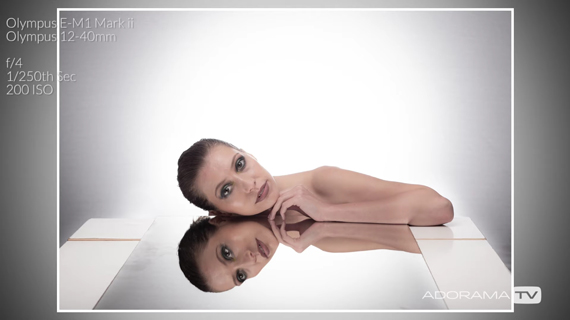
Notice how the background is not uniformly white
While the background does appear white in the center, the edges are grey again. Hoey’s solution is to place two eVOLV 200 lights just behind the model, from her sides, pointed toward the background. Since Hoey has the key light metered at f/4, he meters the background lights too at f/4 by placing the light meter at the back of the model and pointing at the background. Doing so results in a crisp white background that is uniformly white.
To give an image a bit of a moody look, Hoey shifts the key light so that it lights the model from her back. This makes the result more intense with a shadowy look.
Post Processing
Keep an eye out for smudges and weird highlighted reflections on the mirror. Like Hoey demonstrates in the video, such problems can be solved by using the Heal brush in Photoshop. When using the heal brush, be sure to sample repeatedly from areas close to the spot you’re working on for better results.
The next problem that you might face when working with mirrors is with the quality of reflections. Since mirrors have a glass layer on top, with the reflective silver layer at the bottom, two separate reflections will be formed. This means that the resulting image will neither be sharp nor blurry.
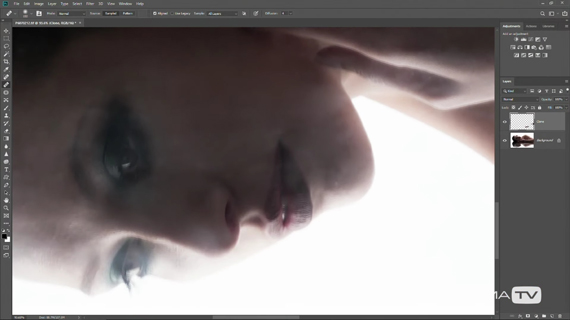
Notice how the reflection is unclear
As a fix, Hoey makes the reflection appear blurry using the “Tilt-Shift” blur technique.
- Go to Filter > Blur Gallery > Tilt-Shift
- Of the four lines that you’ll see, drag the second line above the model. Align the third line where the model’s arm meets the mirror. And drag the fourth dotted line toward the reflected part.
- This will cause no blur to be applied on the model while a gradual blur will be applied on the lower reflection part.
- For the blur amount, dial in a value to your taste and hit OK. Hoey prefers a value in the mid-twenties. You will notice that the reflection will appear blurrier. Be sure not to overdo it, though.
Do you happen to have a mirror lying around in your studio? Use it as a prop and get creative!
Like This Article?
Don't Miss The Next One!
Join over 100,000 photographers of all experience levels who receive our free photography tips and articles to stay current:
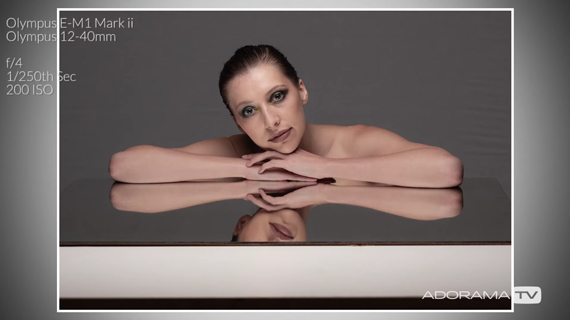
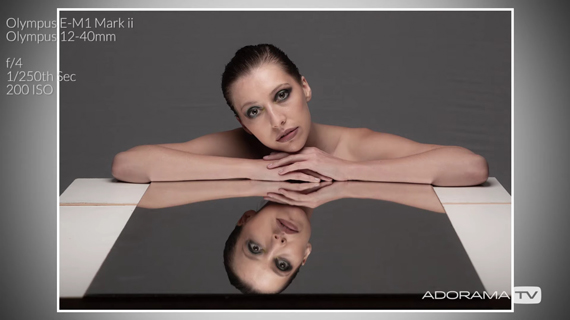
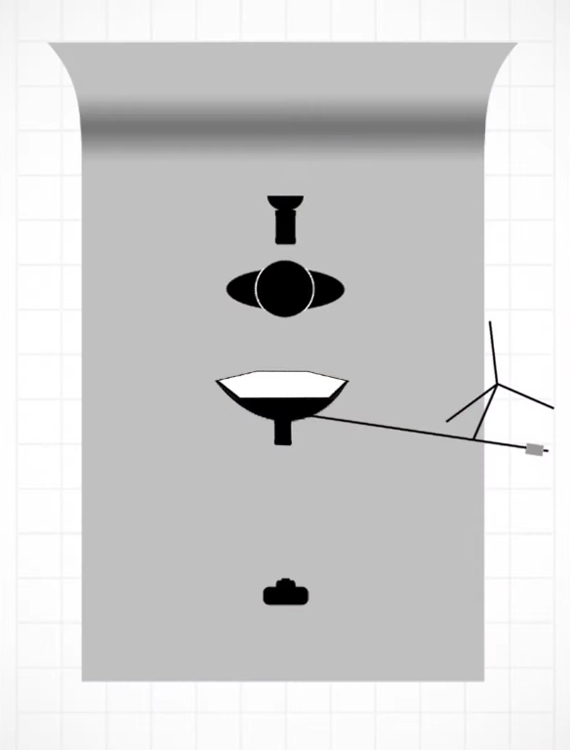
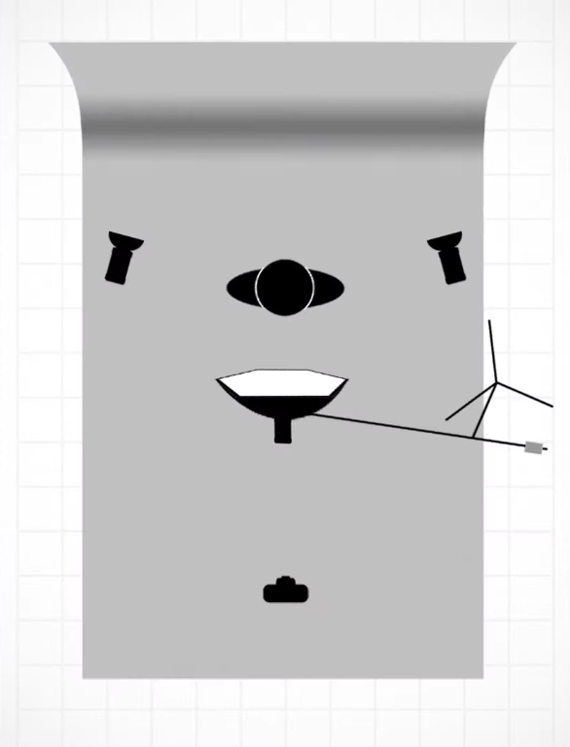
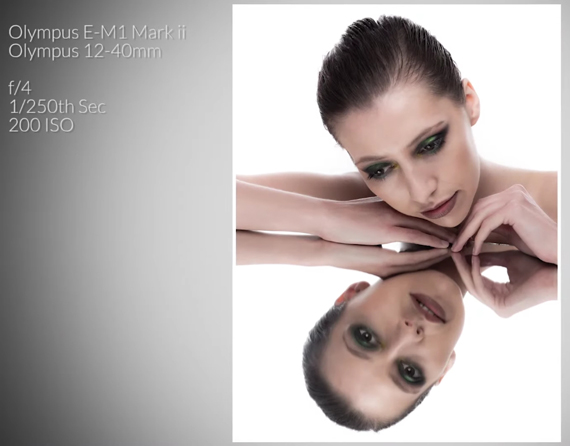
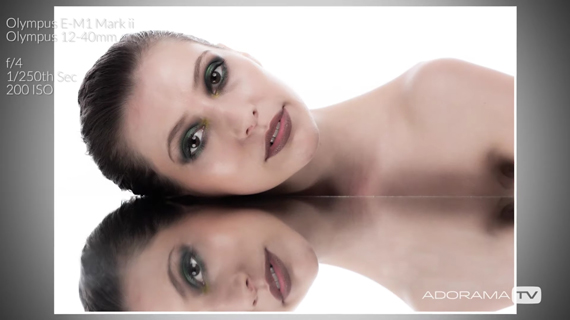
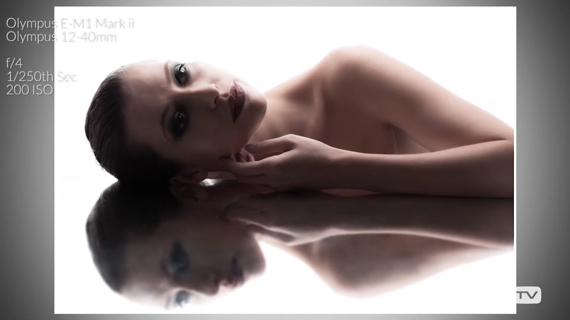
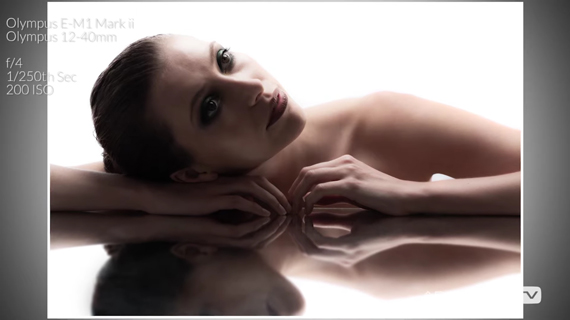
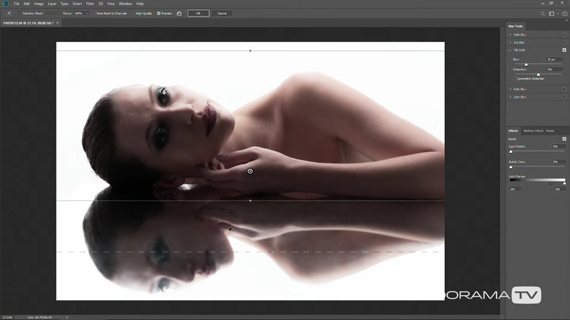
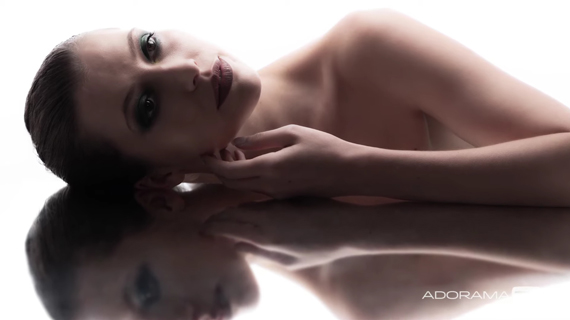






Leave a Reply